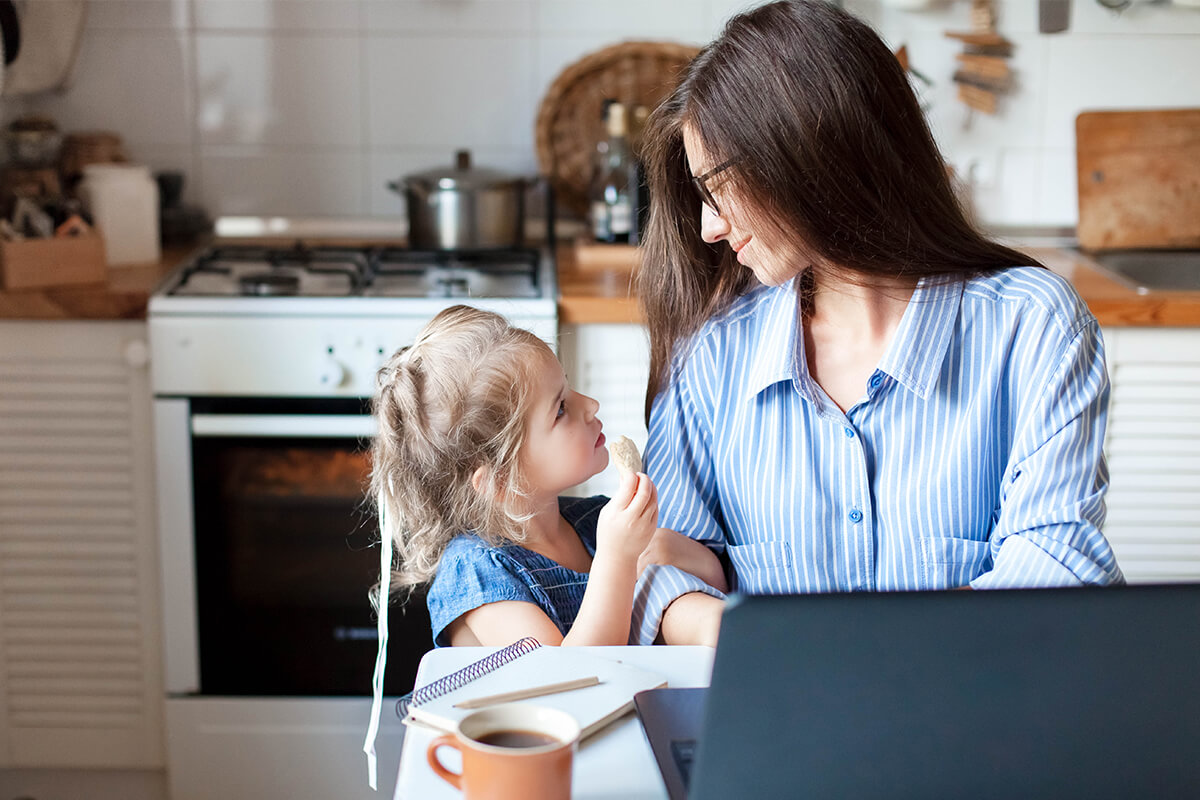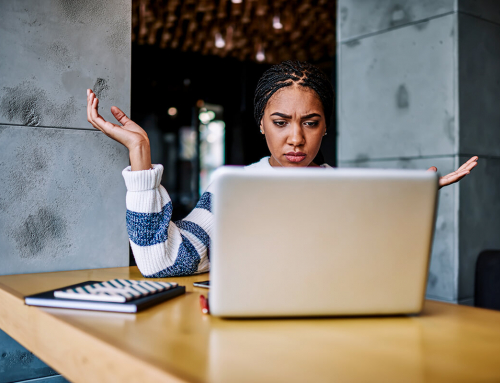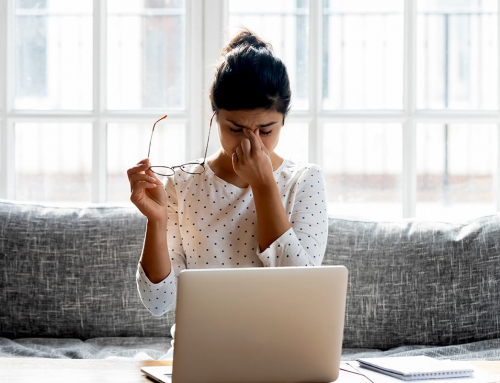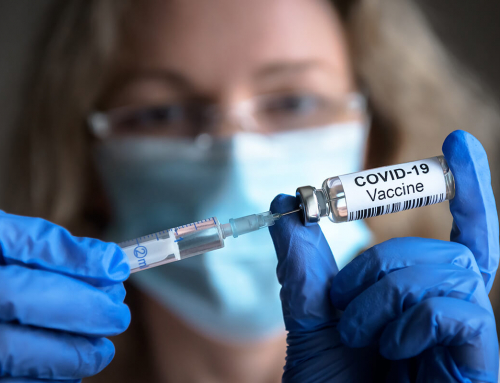I don’t know about you, but I’m a little tired of all the bad news, scary news and hard news around COVID-19. So, here’s a little data that tells a happier (mostly) story about American parenting during the pandemic.
The IPREX Parent Normal Survey was fielded between April 1 and 8 by the research and creative firm Marketing for Change Co. for Vehr Communications and its partners in the IPREX global communication network. Vehr Communications is a leading member of IPREX, a global network of nearly 70 communication agencies in 26 countries. The survey asked 1,519 U.S. parents and other caregivers about their behaviors, their children’s behavior and their perception of what other parents do.
This is the first statistical portrait of American parenting during this global pandemic.
The results show evidence of sadness and fear, but also glimmers of hope. Clearly, it’s been a tough month: A third of the parents reported someone in their household losing a job as a result of the coronavirus.
But while most parents are imposing strict new restrictions on their children’s movements and many report feeling depressed, most are also experiencing a new sense of togetherness and many are outdoors more, exercising more and even recycling more.
It is also a story of two Americas, with job losses less common among the wealthiest families and middle-income parents more likely than lower-income parents to be newly working from home. Wealthy parents (household incomes over $100,000) were the most likely of all to be newly working from home.
In addition to being interesting, this research provides very valuable information about choices American parents are making as nearly all of us work and school from home. How this global pandemic is impacting the lives of American families is vitally important information for American business.
Here are the study highlights:
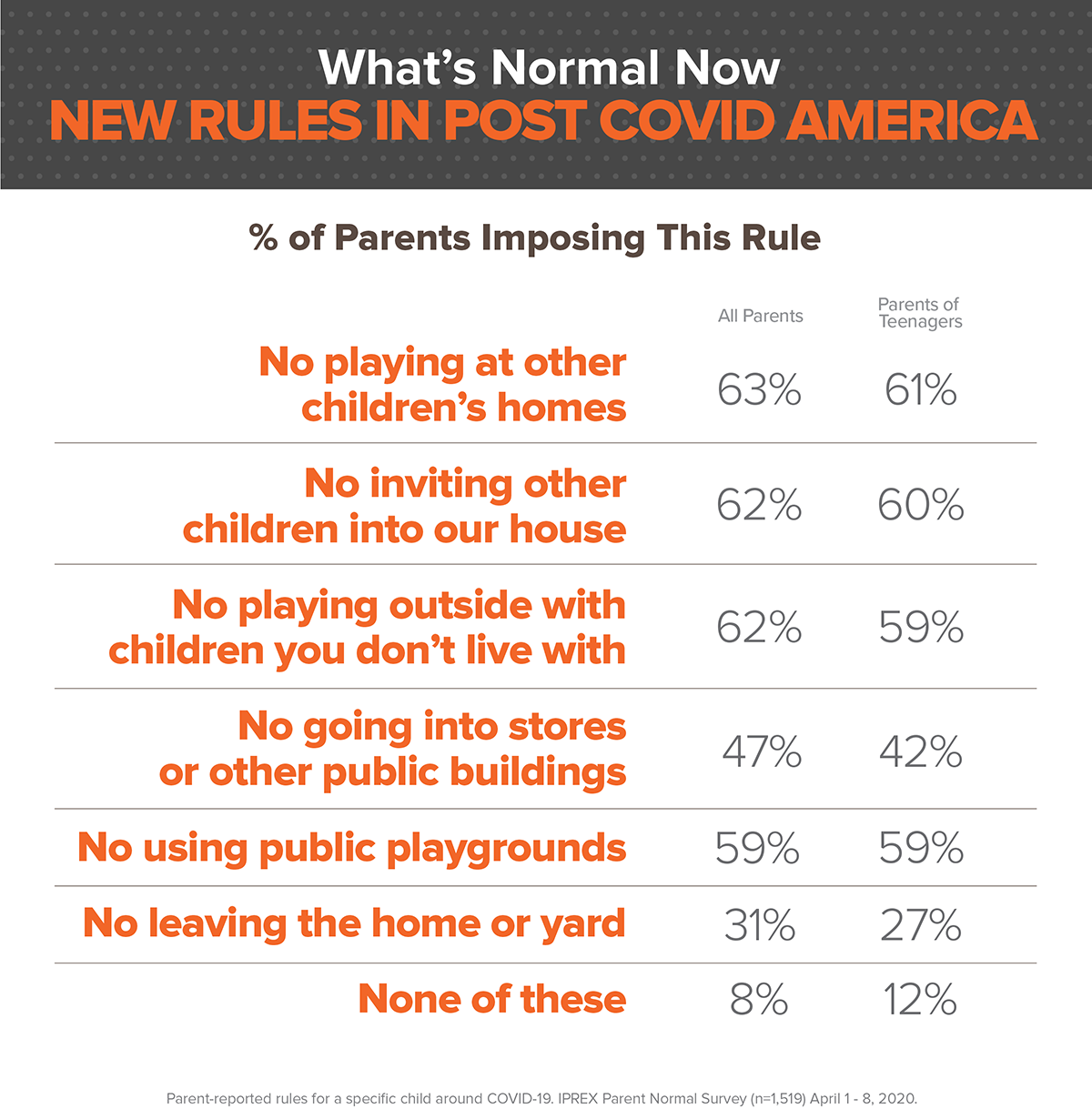
- Two-thirds of parents are keeping kids safe at home: Nearly two out of three parents are barring their children from playing with children who don’t live with them. Almost a third of parents (31%) have gone so far as to limit their children to their own home and yard.
- The other one-third, not so much: Nevertheless, a large share of children — about a third — were still playing the same amount or even more with children outside their home. The biggest factor here is the parent’s parenting style, with the authoritative parents — those who jointly make rules with their children — having the most success at this form of distancing.
- “Wash your hands!”: In the past three weeks, over three-quarters of parents have told their children over 5 about washing hands regularly and keeping six feet from others to avoid spreading germs.
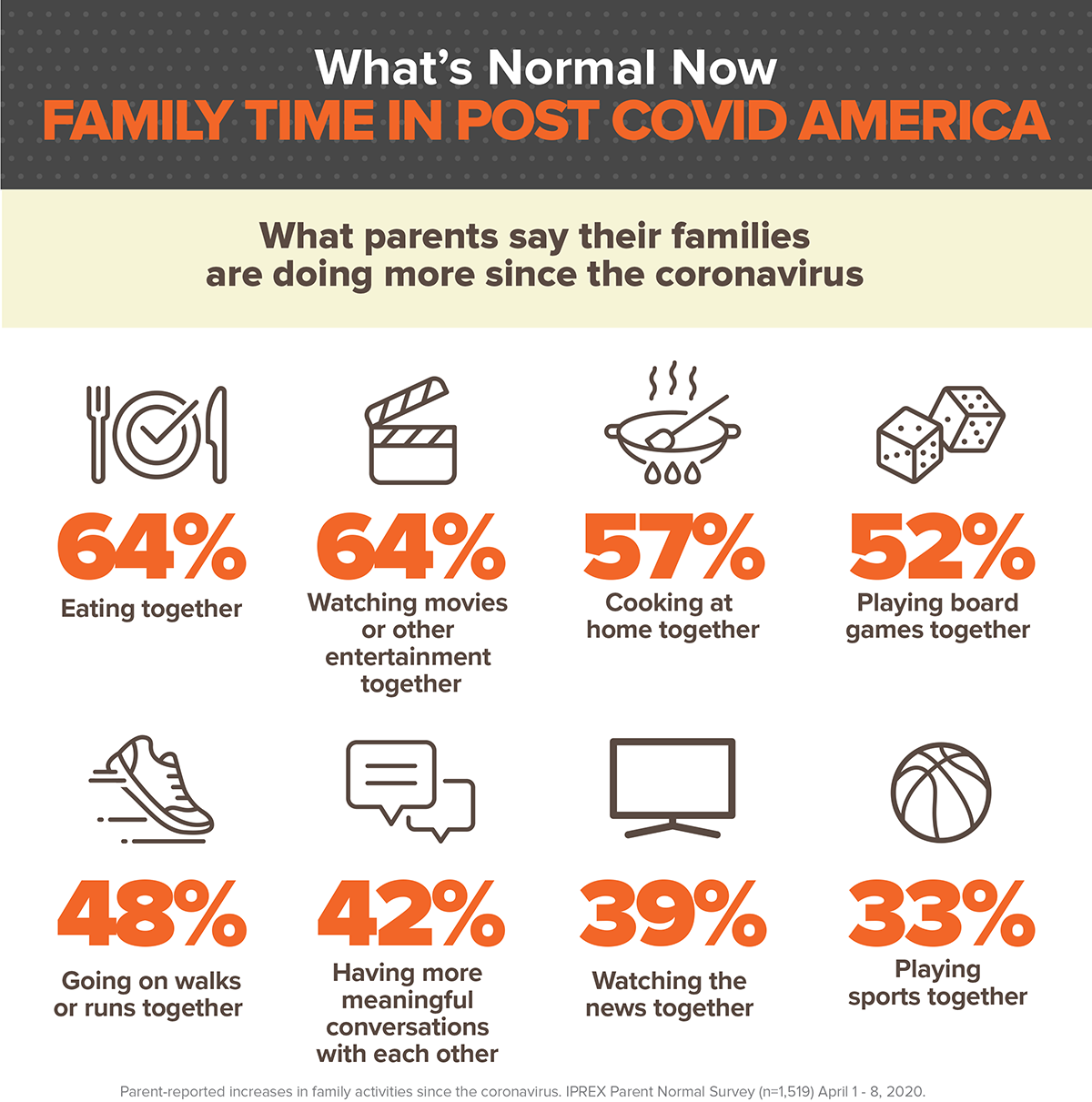
- More together time: Almost two out of three (64%) parents say they are eating and watching entertainment together more as family than before the coronavirus. More than half are also cooking at home together (57%) and playing board games together (52%).
- Even more together time: About half the parents (48%) say they are going on walks or runs more often with their family. Four in 10 parents say they are having more meaningful conversations as a family (42%), and roughly the same amount are watching the news together more often (39%).
- Less time with friends: But even as two-thirds of parents (65%) spend more time with their children, 57% report spending less time with their friends. Two out of five (38%) say they are feeling down or depressed more often, compared with 17% who say they feel that less often.
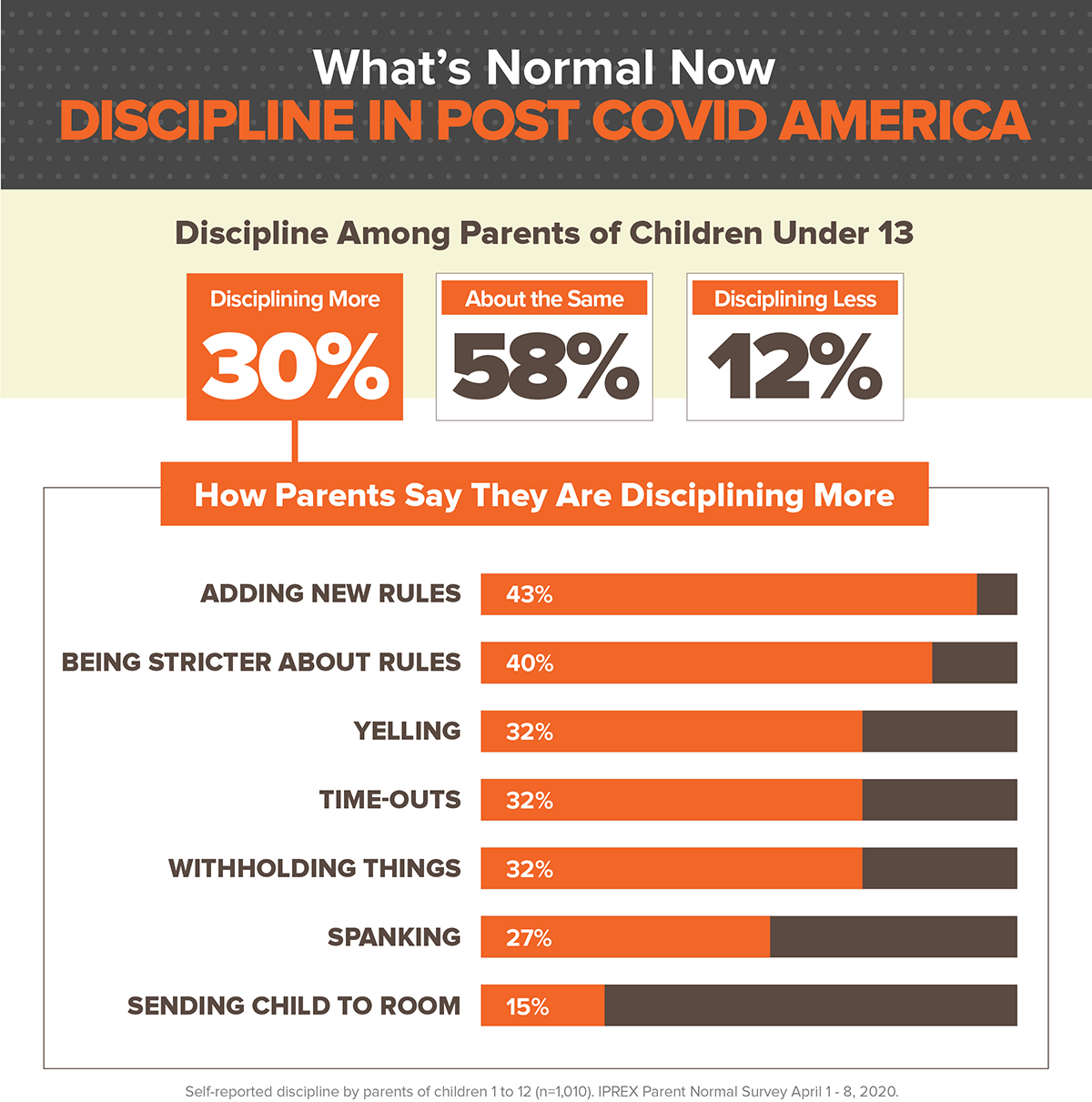
- More discipline: Nearly one out of three parents of children under 13 (30%) say they find themselves disciplining their children more, including adding new rules, being stricter, yelling, imposing time-outs and withholding things. One in four (27%) of those parents are spanking more. Parents in places where schools and daycare centers had more recently closed were more likely to be disciplining more — potentially an indication of the challenges parents face as children initially spend more time at home.
- More guns and more gun safety: One out of five parents (22%) reported buying a gun for their home in the past month. The bulk of these same parents (83%) also talked to their children about gun safety in that same period.
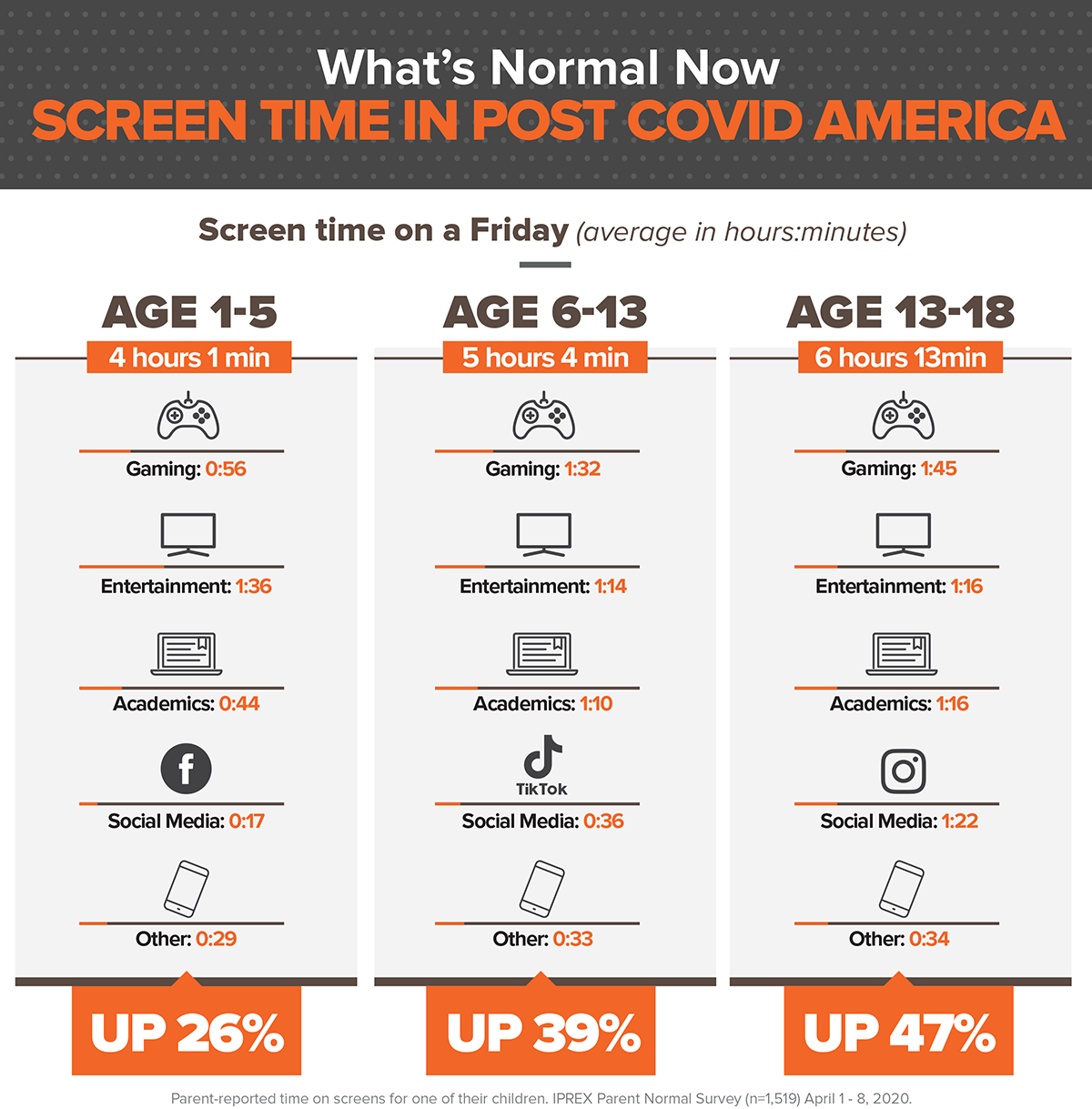 Kids’ screen time is way up: Average screen time since the coronavirus hit has jumped 38%. Last Friday (April 8), parents reported their children spent an average of 5.1 hours on screens compared to 3.7 hours on an average Friday before the coronavirus. Teenagers last Friday had an average of 6.2 hours of screen time, including gaming, entertainment, academics, social media and other online activities. The good news: 43% of the increase for all ages was in distance learning and academics.
Kids’ screen time is way up: Average screen time since the coronavirus hit has jumped 38%. Last Friday (April 8), parents reported their children spent an average of 5.1 hours on screens compared to 3.7 hours on an average Friday before the coronavirus. Teenagers last Friday had an average of 6.2 hours of screen time, including gaming, entertainment, academics, social media and other online activities. The good news: 43% of the increase for all ages was in distance learning and academics.
- Parents exercising and getting outside more: Parents are also changing their own behavior. While 58% report spending more time on computers and smartphones, 41% of parents are exercising more and 37% are spending more time outdoors.
- More environmental consciousness: Being home can also mean being more environmentally conscious. Roughly one in three parents say they are recycling more (31%) and conserving energy more (33%), and nearly one in four are composting food waste more (24%). But a third are also using more disposable plastics (34%).
- Giving more to charity for wealthy families: Though most lower-income and middle-income families report giving less or the same amount to charity, 31% of parents with incomes above $100,000 said they were giving more to charities since the coronavirus.
The IPREX Parent Normal Survey was conducted by Marketing for Change Co. April 1 through April 8, 2020, using a sample of 1,519 parents and caregivers nationwide. (Three percent of the sample were grandparents who were the primary caregivers for children in their household; 1% were other caregivers). The online sample aligned with U.S. Census estimates for gender, income, race, ethnicity and region. All online polls are, by definition, non-probability samples that technically cannot have a known margin of error. But online samples, if recruited, managed and selected correctly, can effectively replicate known populations with high levels of accuracy. For this survey, Marketing for Change used the world’s largest first-party data and insights sample source, Dynata’s 60+ million consumer panel. The margin of error for a random probability sample of 1,519 is +/- 3%.
See accompanying infographics here.
